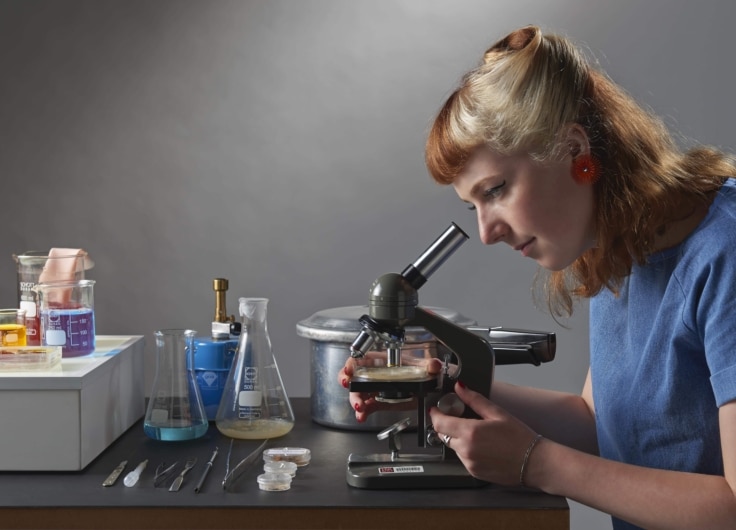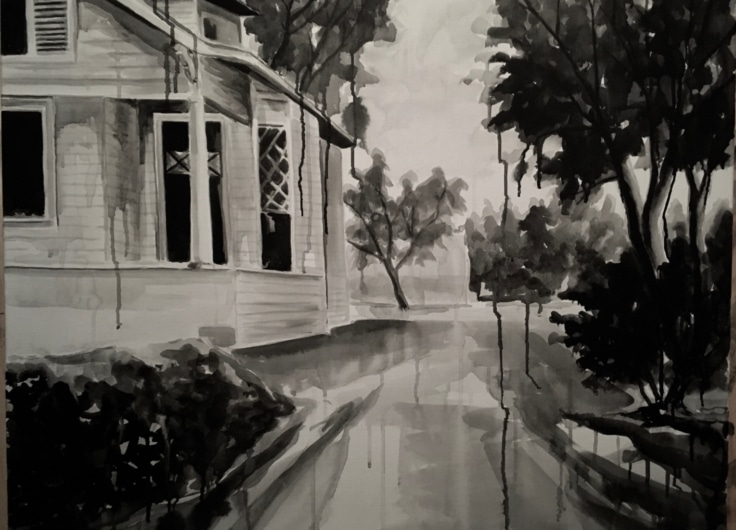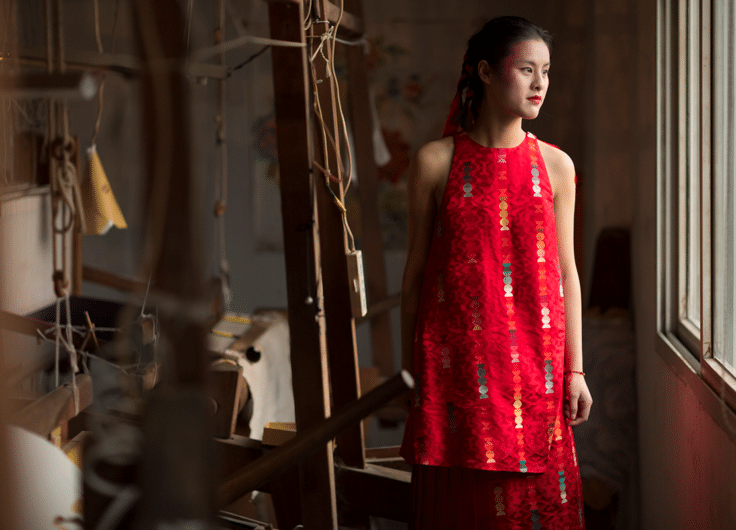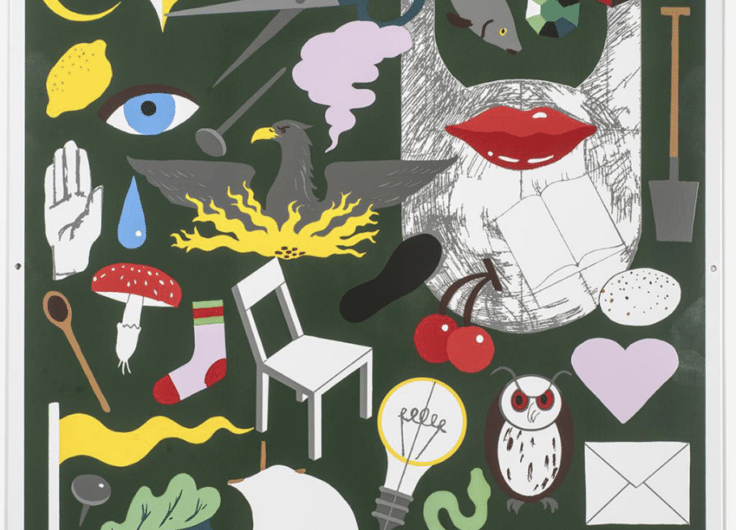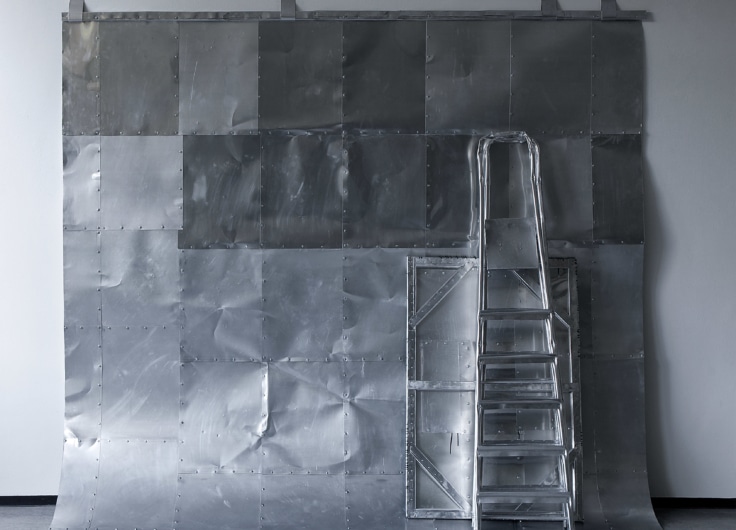Niek Hendrix Gets to Grips With Images by Repainting Them
Whether it is an ‘old master’ or a seemingly trivial image, if a painting impresses Niek Hendrix (b. 1985) he wants to recreate it so he can better understand how the original is put together and create some mental space for a new perspective on something familiar.
Ask ten random people on the street or in the market to name an artist. Nine times out of ten they will probably answer with the name of a painter; and you can guess the answers. Those who are recognised as geniuses: artists who made something completely new, seemingly from nothing.
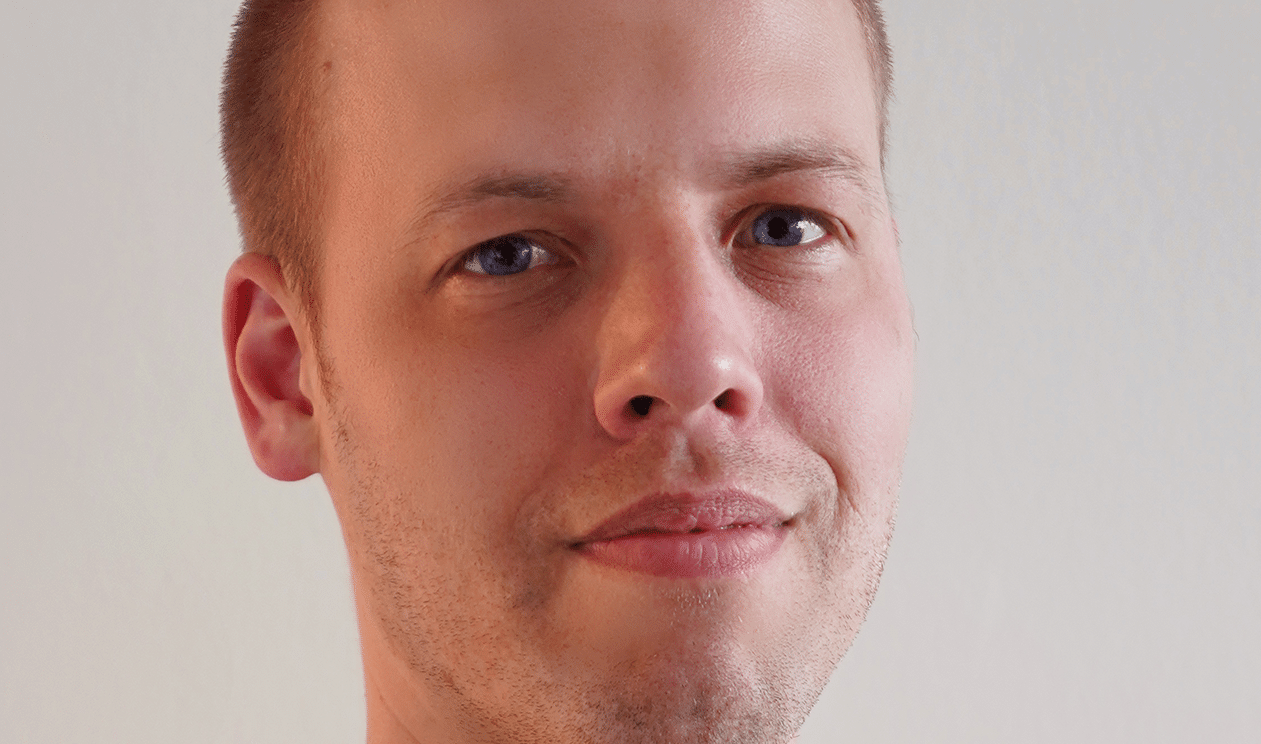 Niek Hendrix
Niek HendrixNiek Hendrix is not interested in the worship of geniuses because, sometimes, even the mediocre works of world-famous painters are praised. The name becomes so important, so pervasive, that it seems to disturb or distort the viewer’s perception. In this context it is logical, perhaps amusing, that as an art academy student Hendrix thought he was not a very good painter, so he used to imitate great paintings. He still does, although the word ‘imitate’ probably lacks sufficient nuance in this case. He doesn’t make copies in the traditional sense, but new images from old ones. He does this because he wants to understand how the image fits together and the effect it has on the viewers – two things that in his opinion are intrinsically connected. The image itself is at the core of his work, not the genius, not the artist.
The everyday and the world renowned
Hendrix does the basic drawing with a pencil and uses paint to finish off. He sometimes paints everyday objects such as the plaster cast of a set of dentures or the effect pedal of an electric guitar. But his sources also include known or even world-renowned paintings, such as René Magritte’s La reproduction interdite (Not to be Reproduced), which depicts a man standing in front of a mirror hung above a mantlepiece. Though the book on the mantelpiece is reflected correctly, the man sees only the back of his head, not his face. The reflection doesn’t make sense.
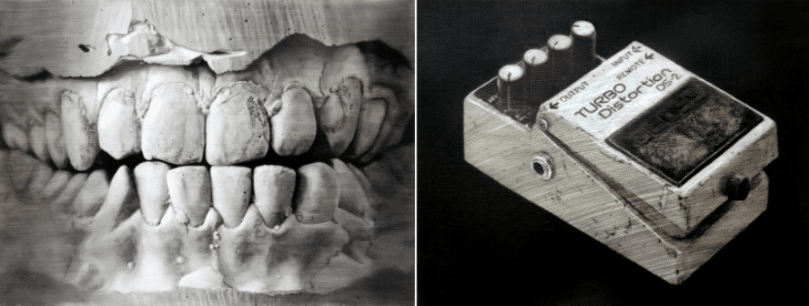 Anesthesize and This Totally Destroys, 2017
Anesthesize and This Totally Destroys, 2017© Niek Hendrix
Hendrix creates his new images using, amongst other things, different paints, substrates or brushes. These practical elements may seem trivial, but they can send a painting in a completely different direction. You can equate this re-creation with the translation of a poem: in any two languages, there are sometimes no equivalents so there are unintentional differences in meaning or nuance.
Apart from paint and pencils, Hendrix also works with words: he writes a popular blog about visual arts called Lost Painters, covering a variety of topics ranging from student exhibitions to the recent painting of René Daniëls. Because it requires a completely different approach, writing about images is, for him, a way to get to grips with how those images work.
A new look
Hendrix’ ‘re-production’ of Magritte’s Not to be Reproduced is a prime example of a new look. The original has been re-worked to death. As a result, its original impact has lessened. When I saw the actual painting for the first time I had already seen it online, in magazines and books so often that I soon felt bored by the original – once the short-lived excitement of finally seeing a world-famous painting in the flesh (as it were) faded. The painting was simply too famous to surprise me.
Despite the title, in 2017 Hendrix did a five-part work called Sisyphus (no copy) comprising four black-and-white takes on Magritte’s original, and a central panel that returns to the meaningless background reflected in the mirror.
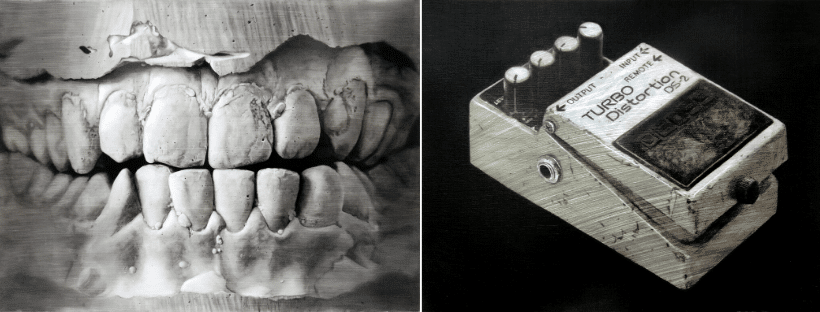 Sisyphus (no copy), 2017
Sisyphus (no copy), 2017© Niek Hendrix
Hendrix’ version is at once familiar and strange. You will instinctively compare it with the well-worn original; as a result, the new details stand out. Looking at Hendrix’ ‘empty’ panel made me aware of how bare the background reflected in the mirror in Magritte’s painting was.
Another important difference with regard to the original image is that Hendrix’ paintings are primarily done in black-and-white. Until 2015 he regularly produced paintings with colour (which is not to say ‘coloured paintings’) and he still works with colour today, though in a constrained manner. Colour often has the habit of grabbing all the attention; that’s why many photographers consciously choose to use black-and-white, so they can emphasise form and composition.
Hendrix uses this tactic for another reason: it makes his paintings hang together as a single body of work, although the images – and his sources of inspiration – can be very different.
Windows and the cabinet of curiosities
You might think the tactic has a democratising effect, but Hendrix hears too much political connotation in the word. He himself sometimes speaks about ‘open source’, though this is not to say that every image is suitable for re-creation. He is strict about what he chooses or ignores, though there are no hard and fast criteria of selection. The choice of an image is often based on feelings, based on a ‘spark’.
Sometimes, he combines different, sometimes overlapping images. For example, The Vessel (Ombres Chinoise), done in 2016 is one canvas that includes, amongst other things, a still life of food, a solar eclipse and the skull of a ram.
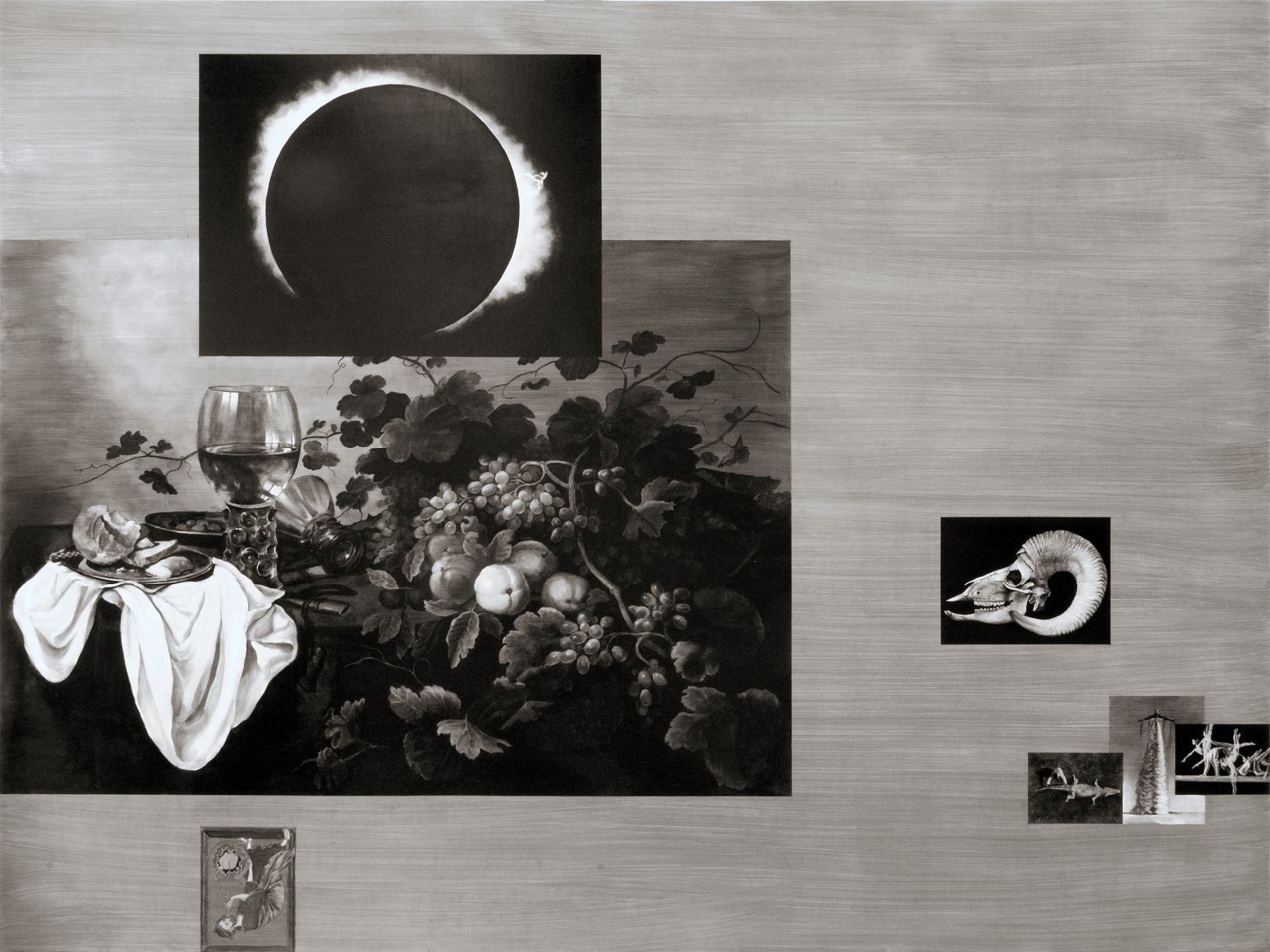 The Vessel (Ombre Chinoise), 2016
The Vessel (Ombre Chinoise), 2016© Niek Hendrix
All were painted as separate canvases against a relatively plain background. When looking at the composition as a whole, it is almost impossible to tell that it is, in fact, one piece and not part of a wall. Getting to grips with a single image is hard enough; compositions like this demand more from both Hendrix and his viewers.
Hendrix calls these compositions ‘constellations’ and notes two sources of inspiration: One is the computer where we might have numerous windows open next to each other – consider the very name of the Windows system. Of course, these image combinations change the way images are viewed: in films, for example, images follow each other in a linear manner that creates, at most, the illusion of a coordinated arrangement.
Hendrix admits that he is part of a generation that is used to the convenience of having an enormous reservoir of images available online. But his constellations of artworks are also influenced by something more important: the cabinet of curiosities or Wunderkammer. What draws Hendrix is the holistic worldview this ‘wonder cupboard’ presents: the idea that everything is connected whether we speak of coins from Classical Antiquity or conjoined twins reserved in alcohol, they can be viewed side-by-side.
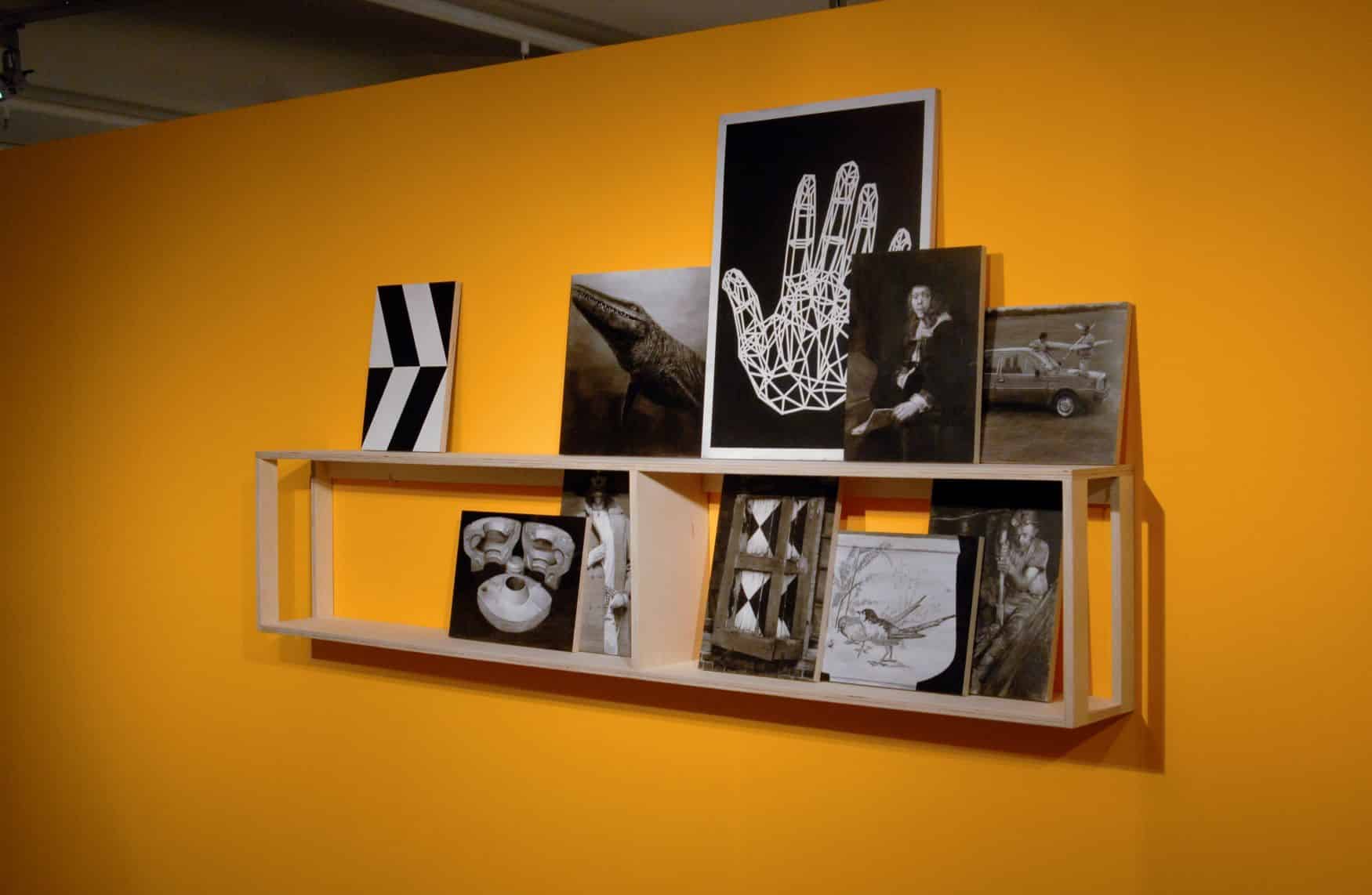 Cabinet (The Nightingale Sings in the Bronze Green Oaken Wood), 2016
Cabinet (The Nightingale Sings in the Bronze Green Oaken Wood), 2016© Niek Hendrix
This fascination for the cabinet of curiosities is readily visible in a piece like Cabinet (The Nightingale Sings in the Bronze Green Oaken Wood), done in 2016. This is a wooden wall construction including several paintings placed next to each other, sometimes overlapping.
Although the organisation of the Wunderkammer was often illogical and the items displayed without much rhyme or reason, the combination of images in Hendrix’ work has to resonate with his emotions. This naturally makes his research into how things work even more complex.
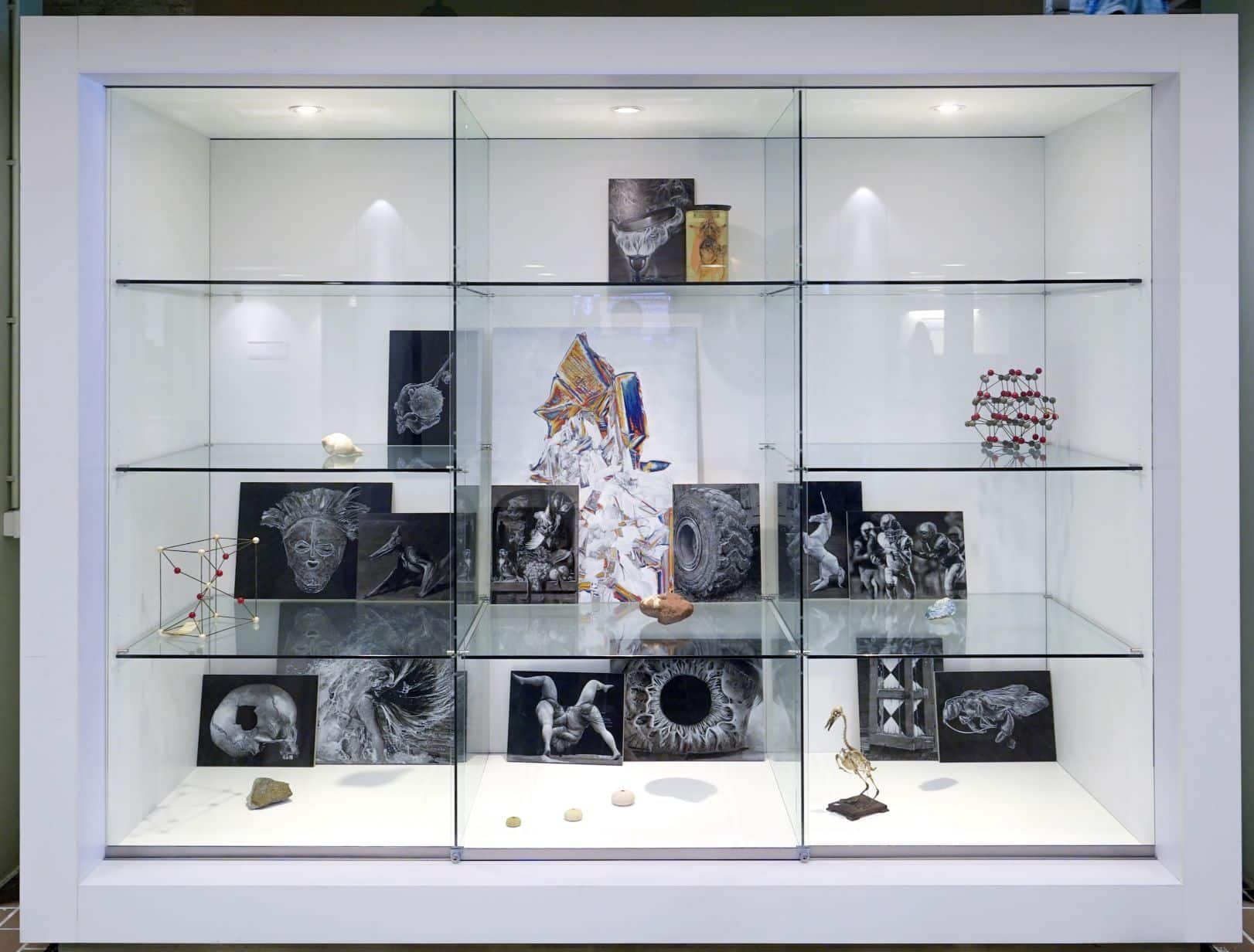 The Golden Record, 2019
The Golden Record, 2019© Niek Hendrix / VU
He seems to want to challenge himself, as in his recent installation (2019) (Cabinet) The Golden Record, created at the invitation of the Free University of Amsterdam.
It is a glass-fronted cabinet in which his paintings are combined with objects from the university’s collection, including an animal skeleton and a model of an atom. It is a collection that at first sight seems random but if you keep looking you begin to see the similarities – and the differences. The combinations are founded on meticulousness and enthusiasm. Hendrix continues to study images and makes his viewers participants in his experiments.


